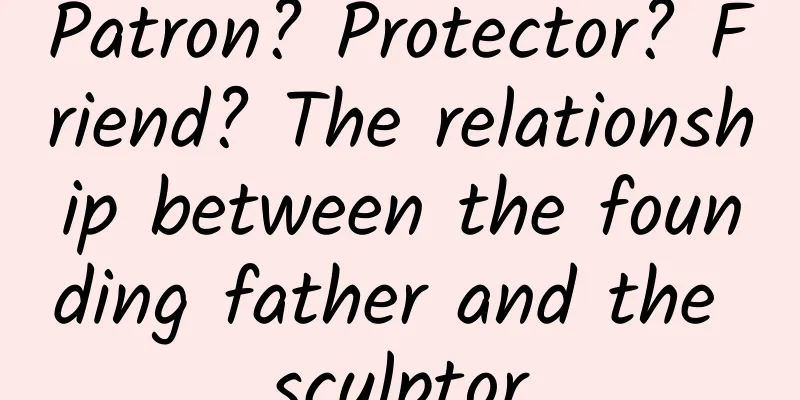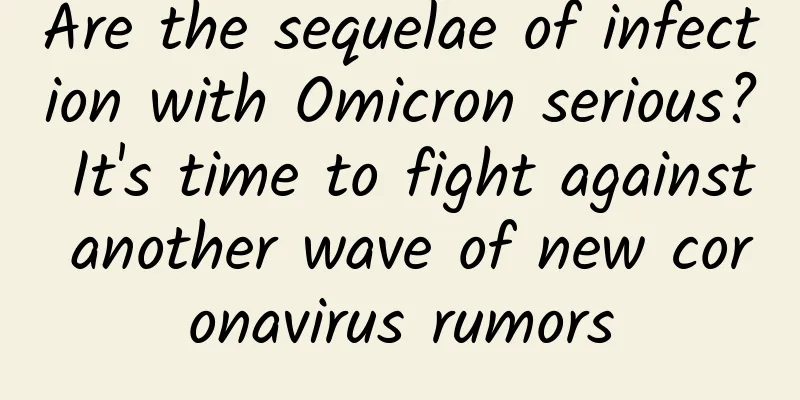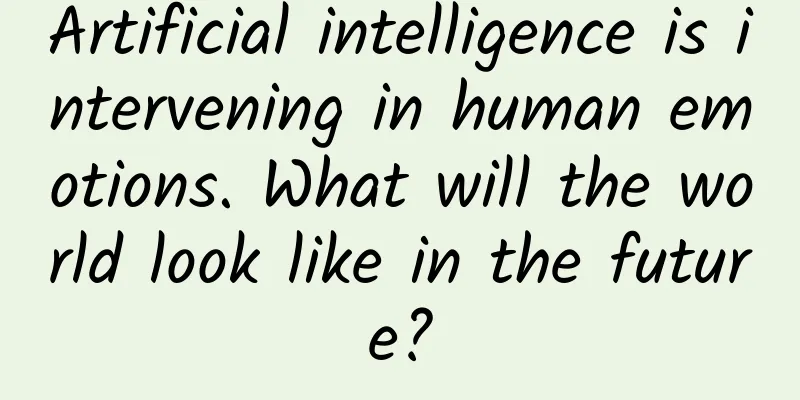Patron? Protector? Friend? The relationship between the founding father and the sculptor

|
In the great sculpture era with many stars shining, Donatello not only invented the layered carving technique, but also, with the sponsorship of the Medici family, created the first nude sculpture in the round after the classical era, which is also his most famous and beloved work. So, what is the relationship between him and his art patron Cosimo the Elder? What important masterpieces did this sculptor create for the Medici Palace? Written by | Zhang Yi 1 Florentine politics, the relationship between Cosimo the Elder and Donatello 1.1. The rise of Cosimo the Elder in Florentine politics The bust of Niccolò da Uzzano is a very famous Renaissance painted pottery sculpture (Figure 1). It has long been believed to be the work of Donatello, but recent restoration and research have found that it may be the work of Donatello's student Desiderio da Settignano (real name Desiderio de Bartolomeo di Francesco detto Ferro, about 1428-1464). The sculpture depicts the Florentine politician Niccolò da Uzzano (1359-1431), who served as the highest executive officer of the Florentine Republic, the Standard-Bearer of Justice. This masterpiece of sculpture vividly shows the spiritual outlook and moral appeal of the leaders of the Florentine Republic in the early Renaissance. The posture of the statue's head turning is obviously influenced by the sculptures of the classical Hellenistic era, and the clothes worn by the characters are also derived from ancient Roman robes. According to Machiavelli's description of him in "History of Florence", we know that he was a rational republican with high prestige in the Florentine Republic and a representative of the aristocratic faction against the Medici family. However, he also firmly opposed the conspiracy of the aristocratic radicals represented by Rinaldo degli Albizzi (1370-1442) to kill or exile the old Cosimo de' Medici, because he knew very well that doing so would lead to the rise of certain families and ultimately endanger the republican system of Florence. Figure 1. Donatello (or, Setignano?), bust of Niccolò da Uzzano, painted pottery, circa 1430-early 1450s, height 46 cm, width 44 cm, now on display in the Florence Police Museum | Image source: Wikipedia Florence established a republican government after it broke free from the control of the feudal lords of Tuscany in 1115. In many ways, it was only the cradle of the modern democratic republic system, but it was not mature. Since the elected chief executive, the Standard-Bearer of Justice, only served for two months, and the frequent replacement of the chief executive could effectively prevent dictatorship, it was difficult to ensure long-term national development policies. Sometimes, external forces even intervened in Florence's domestic politics by taking advantage of domestic factional struggles. From the late 14th century to the early 15th century, some aristocratic leaders in Florence, such as Niccolò da Uzzano, Maso degli Albizzi (1343-1417), and Gino di Neri Capponi (1350-1421), formed an alliance and controlled the Florentine elections by manipulating behind the scenes, thereby controlling the politics of the republic. This mode of operation reminds people of the Triumvirate in the late Roman Republic. However, as the Medici family, which represented the power of the common people, gained political influence due to its success in the banking industry, by the 1420s it gradually began to threaten the interests of the alliance of several major aristocratic families. After Niccolò da Uzzano's death, the conspiracy to exile Cosimo the Elder, led by Rinaldo degli Albizi (1370–1442), the son of Maso degli Albizzi, finally occurred in 1433. The chaos and turmoil caused in Florence, Italy, and some other European countries ended with Cosimo the Elder being recalled by the Florentine Republic government a year later. Many of the initiators of the conspiracy, including Albizzi, were exiled, and Cosimo the Elder thus further controlled the power of the Republic government. It is worth noting that Cosimo the Elder's leadership or manipulation of the Florentine Republic government was not always in the foreground. In fact, he rarely held public office, and many of Florence's domestic and foreign policies were formulated through consultations in the Medici family. Under the leadership of this shrewd and far-sighted banker, Florence gradually adjusted its foreign policy, reduced external pressure by concluding peace and forming an alliance with its old enemy, the Duchy of Milan, and finally reached a basic geopolitical balance with other powerful countries on the Italian peninsula, such as Naples, Venice and the Papal States, which brought the whole of Italy into a period of relative peace for half a century. With the establishment of peace on the peninsula, wealthy Florence began a new cultural construction under the leadership and planning of Cosimo the Elder, especially the rise of humanism and neo-Platonism, which laid the foundation for the arrival of Florence's golden age in the second half of the 15th century. With the strengthening of political influence, Cosimo the Elder cleverly promoted the new cultural and artistic forms developed in Florence as a new lifestyle to the traditional ruling elites of Europe through diplomatic or private means, and the latter's yearning and pursuit of new culture and art would eventually change the direction of European history. 1.2. The relationship between the Medici family as patrons of artists and artists During Cosimo the Elder's exile, Donatello took the initiative to leave Florence and go to Rome in order to support him. Given his reputation at the time, this departure was undoubtedly a strong support for the Medici. Donatello was certainly not the only artist who chose to exile himself. The famous architect and sculptor Michelozzo also went to Padua and Venice with Cosimo the Elder. The latter was famous for his design of the Medici Palace, a masterpiece of Renaissance architecture. Some of his sculptures, such as the silver sculpture of John the Baptist shown in Figure 2, are undoubtedly important sculptures of the Renaissance. An interesting question is, did these artists sponsored by the Medici family choose to leave Florence because of Cosimo the Elder's exile because of politics or other reasons? Here is a slightly broad answer. Figure 2. Michelozzo, John the Baptist, silver sculpture, made in 1452, now on display in the Florence Cathedral Museum | Image source: Wikipedia In Chinese, the Medici family members, especially Cosimo the Elder and Lorenzo the Magnificent, and other people who paid for the paintings of artists at that time are all translated as sponsors, probably because they are called patrons in English, but this Chinese translation will cause many ambiguities and misunderstandings. In fact, the relationship between many artists and the Medici family should be more similar to the relationship between clients and patrounus in Latin, which has existed since the founding of ancient Rome. The more appropriate translation (or explanation) should be the relationship between the protected (clientes) and the person who provides protection or simply the protector (patrounus). Romulus, the founder of ancient Rome and also the first king of Rome, summoned 100 powerful people, or parents, to establish the Roman Senate when the country was founded. These senators were later nobles and protectors. They were not able to enter the Roman Senate because of noble blood or because of the king's favor and favor. The reason why they became senators and protectors was that they were the heads of a family or a clan. Their disciples or families were connected by blood, geography or other more complicated reasons. They were the people protected by the senators. These protected people were Roman citizens and free people with civil rights. As their protectors, the nobles had the obligation and responsibility to provide them with advice and help in their employment, career, children's education, marriage and personal future. Sometimes the protector would even seek help from other nobles with whom he had a good relationship to help his protected people so that the latter's career could succeed; if the protected people encountered some kind of crisis, the protector had an unshirkable responsibility to provide assistance. In turn, the protected also had responsibilities and obligations to their noble protectors. When the protectors encountered difficulties, the protected people came out to try their best to help them overcome the difficulties; more importantly, when the protectors ran for public office, the protected had the responsibility and obligation to vote for them, because the protected were Roman citizens with the right to vote. When the Roman Republic enacted the first law, the Twelve Tables, the responsibilities and obligations between the protectors and the protected were clearly stipulated in the law. The relationship between the protectors and the protected was passed down from generation to generation. They were not entirely a relationship between the strong and the weak, nor a relationship between the ruler and the ruled. The most important thing to maintain this relationship was morality and integrity. Betrayal and dishonesty were regarded as extremely bad qualities in ancient Rome. I have explained this abstractly for a long time. I wonder if readers understand the relationship between the protector and the protected. There was a very popular American movie called "The Godfather". The movie tells the story of Italian immigrants in New York. The relationship between the protagonist Godfather and the people he protects, if the underworld color is removed, is a good explanation of the relationship between the protector and the protected. The Florentines in the early Renaissance regarded themselves as descendants of the ancient Romans, and they also regarded the Republic of Florence as the continuation of the ancient Roman Republic. In this case, the relationship between the inheritor and the protected should not be difficult to understand. It is particularly worth pointing out that the reason why many historians who truly understand the Renaissance from Vasari to the present day have praised the Medici family, especially the rulers of Florence from Cosimo the Elder to Lorenzo the Magnificent, has a lot to do with the social status of artists at that time. In the 15th century of the Renaissance, the social status of artists was not high. They were in the same position as butchers, bakers and vendors. They did not belong to the intellectual class, let alone the upper class. The improvement of the social status of artists and their partial entry into the social elite only began in the early 16th century during the era of Michelangelo and Raphael. Precisely because of the low social status of artists, in the first half of the 15th century, the actual rulers of Florence such as Cosimo the Elder were full of respect and friendship for artists throughout their lives, creating job opportunities for them, especially when their talents were just beginning to show but not appreciated by everyone, they fought for orders for them, discussed art with them and appreciated their works, moved them with love to work for themselves or the Republic, etc. Such behavior is truly touching and worthy of historians to write about and praise in their books. As patrons, Cosimo the Elder and Lorenzo the Magnificent supported humanist scholars and artists, which made Florence's culture and art achieve great achievements. This small city-state became the cultural and artistic center of Europe in the middle of the fifteenth century. To this day, people from all over the world still come here in an endless stream to watch, learn and admire the cultural achievements of the masters of the Renaissance. Of course, people will not forget the Medici family who provided various conditions and fueled the creation of these achievements. Under the leadership of the latter, Florence achieved extraordinary political, economic and diplomatic achievements. Coupled with the super-prosperous cultural and artistic undertakings, Florence became an important and powerful country in Europe. The Medici family not only provided protection and sponsorship for artists and humanist scholars, but as bankers and politicians, they must have also provided protection and assistance to other types of talents according to professional needs. There was a huge circle of elite talents around the Medici family. It was their support and that of the people that made the Medici family the actual rulers of Florence. After the death of Cosimo the Elder, he was awarded the title of "Father of the Republic" (Pater Patriae) by the Florentine government. He was the only Florentine citizen to receive this honor. Lorenzo the Magnificent, who inherited Cosimo the Elder's career, became the undisputed most politically and culturally influential leader in the whole of Europe in the second half of the 15th century. It was the Medici family and the talents gathered around them that used their wisdom to enable Florence to use soft power to guide the cultural direction of Europe and effectively control European politics and diplomacy for more than half a century. There is no doubt that Donatello was an artist protected and sponsored by the Medici family, but through reading Vasari's biography, we know that Donatello and Cosimo the Elder had a sincere friendship of mutual admiration, which can be confirmed by the fact that Donatello was buried next to Cosimo the Elder's tomb in the Cathedral of San Lorenzo after his death according to his will. Therefore, we should not simply imagine Cosimo the Elder as a customer who ordered sculptures from Donatello, and Donatello was not a court sculptor in the sense of ancient China or other European countries. 2 Donatello's two important masterpieces for the Medici Palace courtyard As Cosimo de' Medici established his dominance in Florence, Donatello's special friendship with Cosimo undoubtedly helped him obtain some very important bronze sculpture projects with important political symbolic significance. Here are two of his most famous works. 2.1. Bronze sculpture of David This is the first full nude sculpture made after the Classical Age, and it is also Donatello's most famous and beloved work (Figure 3). It was commissioned by Cosimo de' Medici the Elder in 1440 and placed in the courtyard of the Medici Palace after 1457. We can see the description of this sculpture in the courtyard of the Medici Palace in the document recording the wedding of Lorenzo the Magnificent in 1469. After the Medici family lost power in 1494, the sculpture was moved to the Palazzo del Presbyteriano, the seat of the Florentine Republic government, as a symbol of the Florentine Republic. Donatello created this extremely unusual heroic image based on the story in the Old Testament about the young shepherd David killing the giant Goliath who savagely invaded Israel to defend his country. Although the allusion comes from the monotheistic Bible, Donatello borrowed and adopted the slightly melancholy and contemplative youth image in the sculptures of the Late Hellenistic Period in ancient times in terms of shape and expression; more importantly, Donatello made the image of David he created extremely delicate and sexy, and the smooth skin on the statue is particularly eye-catching. David wears a relatively large, soft, wide-brimmed hat on his head (Figure 3a), which is surrounded by a wreath of laurel leaves and decorative ribbons that remind people of the winged hat on the head of Mercury in classical mythology. In this statue, the theme of the Renaissance Republic citizen hero evolved from the Old Testament is perfectly combined with ancient mythology. Figure 3. Donatello, David, bronze sculpture, made around 1440, 158 cm high, now on display in the Florence Police Museum | Image source: Wikipedia Fig. 3a. Donatello, David (detail) In Florence during the Renaissance, David was a very popular artistic subject, and there were many paintings and sculptures about David. The ruler used the image of David, the king of Israel in the Old Testament of the Bible, to promise the people that the government he presided over was a good and benevolent government that would uphold justice and protect its people, and that the ruler would even give up power for the benefit of the people when necessary. For example, when educating his grandson Lorenzo the Magnificent, Cosimo the Elder told the story of David's self-exile to protect his people from the cruel Saul. He used this to explain why Cosimo the Elder chose to be exiled by those who conspired against him in 1433, instead of using his influence to arouse the citizens who supported him to fight as his supporters expected, because this would lead to a bloody civil war in the Republic of Florence. 2.2. Judith and Holofernes The bronze sculpture Judith Killing Holofernes (Figure 4) was made by Donatello in the late 1450s for the top of a column in the middle of a fountain pool in the Medici Palace Garden. It tells the story of Judith, a beautiful Jewish widow in the Old Testament. When the Assyrian Empire army, led by General Holofernes, attacked Israel, Jewish men were afraid of the Assyrian army. Judith took her servants to the Assyrian army camp, seduced Holofernes with her beauty and killed him. The Assyrian army retreated because of the loss of their leader, and Judith saved Israel. It was completed under the sponsorship of Cosimo de' Medici the Elder. Anyone who can observe this work up close will be amazed by its exquisite carving. Figure 4. Donatello, Judith killing Holofernes, bronze sculpture, made in the late 1450s, 236 cm high, now on display in the Palazzo Vecchio Museum in Florence | Image source: Wikipedia Figure 4a, Donatello, Judith killing Holofernes (detail) In this group of sculptures, Judith is shown as a beautiful woman, calmly and firmly raising the long knife in her right hand, ready to chop off the head of Holofernes, who is twisted by her left hand. Holofernes is in a deep sleep and is completely unaware of his approaching death. This group of sculptures was completed by the method of block casting. It was once gilded on the surface. To this day, we can still clearly see traces of gilding in some parts of the sculptures, such as the long knife in Judith's hand (Figure 4a). There is a luxurious decorative silk cushion at the bottom of the sculpture, which reminds people of Donatello's early masterpiece, the marble statue of St. Mark; Donatello's signature can be seen on the cushion. On the pillars on which this group of sculptures is placed, there is a famous poem by Piero de' Medici (1416-December 2, 1469), the ruler of Florence in the 1460s: Empires fall in luxury, cities thrive in virtue. Look at that arrogant head, cut off by humble hands. (Regna cadunt luxu, surgunt virtutibus urbes, Caesa vides humili colla superba manu). After Donatello's sculpture group was completed, it was placed in the Medici Palace (now called Palazzo Medici Riccardi). Although Cosimo the Elder of the Medici family had become the actual ruler of Florence since the mid-1430s, he followed his father's will and was an extremely low-key person. He rarely held public office. However, many key political decisions in Florence were made in the Medici Palace. As a close friend and follower of Cosimo the Elder, the sculptor was well aware of Cosimo the Elder's political status in Florence, and in his heart he sincerely regarded Cosimo the Elder as the mainstay of the Republic. This sculpture first shows the power of women, and at the same time it is a celebration of human free will in the republican ideal and the patriotic dedication of citizens. The two bronze sculptures of David and Judith killing Holofernes are undoubtedly symbols of the 15th century Florentine Republic's brave self-defense and fearlessness of violence, but it is slightly ironic that they were both placed in the courtyard of the Medici family's private palace. Today, the two statues have been moved to different museums. Sometimes I can't help but wonder, as the sponsors of the statues, what kind of rapists were in the minds of the Medici family? Today, more than 500 years later, when we look back on the long history, these two bronze sculptures, which are meticulously carved and full of tension, should be symbols of the awakening, freedom and responsibility of human youth. They together represent the highest artistic achievements of early Renaissance sculpture art. 3 Conclusion Cosimo de' Medici the Elder died on August 1, 1464. The Medici family followed his will and held the simplest funeral for him as a civilian. However, unexpectedly, almost all Florentines spontaneously joined the funeral procession, including not only Cosimo the Elder's friends but also his political rivals. During the more than 30 years that he led Florence, Florence grew from an ordinary small state to a political, economic, cultural and artistic center that played an important role in European affairs, enjoying peace, prosperity and respect from the world. Cosimo was an extremely introverted and cautious person. Although he had a huge influence on the republic, he rarely held public office. Therefore, except for a few aristocratic leaders, the vast majority of Florentine citizens did not feel the subtle changes in the city-state republican system. In 1465, the Florentine Council passed a resolution to posthumously confer the title of "Father of the Founding of the Nation" (PATER PATRIAE) on him (Note: Some scholars believe that the Florentine Council officially conferred the title of "Father of the Founding of the Nation" on Cosimo the Elder on August 20, 1464, but some other scholars believe that Cosimo the Elder was officially conferred the title on March 16, 1465.). Judging from Cosimo the Elder's contribution to Florence, he deserved this title. He is also the only person in Florence's history to have received this honor. Even today, more than 500 years later, we can still see this title under Cosimo's full-body statue at the entrance of the Uffizi Museum in Florence. But Cosimo the Elder's influence went far beyond the Florentine Republic. The Pope Pius II (reigned 1458-62) made the following evaluation of Cosimo the Elder: "He was of good build and of medium height; his manner of speech and manners were elegant; he was more cultured than the other merchants and knew something of Greece; his mind was clear and quick; he was neither timid nor brave; he could endure fatigue and hunger and often stayed up all night. There was nothing that happened in Italy that he did not know... He was every bit a king, though without title and without land." (My own translation) It was precisely because of his profound insight into the entire international relations that on April 9, 1454, under the promotion and mediation of Cosimo the Elder, Italian powers such as Milan, Venice and Florence signed the Treaty of Lodi. Later, the Kingdom of Naples and the Papal States joined the treaty in August of the same year. The signing of the Treaty of Lodi basically eliminated the influence of external forces such as France on Italy. The entire peninsula entered a period of relative peace for nearly half a century due to the balance of major forces on all sides. This environment laid a good external international environment foundation for the arrival of the Golden Age of Florence; the Medici family also began to enter the sight of the traditional blue-blooded aristocratic forces that dominated European politics because of its diplomatic means, laying the foundation for its eventual promotion to the aristocratic elite. When Cosimo the Elder died, he asked his son Piero to take good care of Donatello, and gave Donatello a property with land owned by the Medici family in the suburbs of Florence for his retirement. However, because he was not used to the rural life in the suburbs, Donatello returned to Florence not long after. He returned the property and asked to continue to engage in sculpture. Donatello died in 1466. The Cosimo medal shown in Figure 5 should be one of Donatello's last works (Note: There are also different opinions that the author of this medal may be Michelozzo or Bertoldo di Giovanni). This side relief statue undoubtedly shows an idealized Cosimo, whose image reminds people of the image of the strong and simple civic leader in the Roman Republic era. Although Cosimo the Elder's son Piero de' Medici and grandson Lorenzo the Magnificent inherited Cosimo the Elder's tradition of sponsoring art, their understanding and taste of art were different from those of their ancestors. Coupled with the differences in their sponsorship methods and the further rise of Neoplatonism promoted by Cosimo the Elder, Florentine Renaissance art will enter its golden age, and artists represented by Verrocchio will quickly bring Florentine sculpture and painting to a new peak. Figure 5. Commemorative medal cast by the Florentine Republic government for Cosimo, the "founding father", in the mid-to-late 1460s, designed by Donatello | Image source: Wikipedia About the Author Zhang Yi is an art historian, consultant to the Clock and Ancient Musical Instruments Department of the Hermitage Museum in Russia, consultant to the French Pendulum Clock Gallery, consultant to the Guangdong Clock Collection Research Professional Committee, and also a mathematician and logician. Special Tips 1. Go to the "Featured Column" at the bottom of the menu of the "Fanpu" WeChat public account to read a series of popular science articles on different topics. 2. Fanpu has opened the function of searching articles by month. Follow the official account and reply with the four-digit year + month, such as "1903", to get the article index of March 2019, and so on. Copyright statement: Personal forwarding is welcome. Any form of media or organization is not allowed to reprint or excerpt without authorization. For reprint authorization, please contact the backstage of the "Fanpu" WeChat public account. |
<<: How are bridge piers in the sea built? Are they built first and then transported there?
>>: Tulip: I am extremely beautiful and priceless, all because of a "serious illness"
Recommend
If you see this kind of flower on a date, you must step on it to death immediately!
Source: Dr. Curious This article has been authori...
ActivityThread and ApplicationThread, the bridge between the main thread of the Android application and AMS communication
ActivityThread ActivityThread is an important com...
Some people say that octopuses are alien intelligent life. Is this true?
Some time ago, the incident of a netizen encounte...
4000 words to analyze Perfect Diary's social media tactics
Recently, I was surfing the Internet and found a ...
National Pomegranate Geography
Written by Wei Shuihua Header Image | Who is the ...
How to write copy that even tired users can understand at a glance?
Imagine there are two men on the dating market: A...
Are you stressed? The puppy passing by also cares | Nature Trumpet
Shark struck by boat Recently, scientists recorde...
A new AI operating system is emerging, and Android may withdraw from China in the future
At present, many domestic mobile phone brands cla...
Taking into account online shopping and gaming, Tmall Magic Box new product experience
The new Tmall Magic Box has an outstanding appear...
If your iPhone is seriously draining power, you might as well try turning off these features
Mobile phones are one of the most important tools...
Operation and promotion: refined omni-channel operation plan!
I’ve spent a lot of money on advertising, but why...
Estimation of bandwidth size for renting a server for live video streaming website
Live streaming, a large-scale social application ...
Are you a programmer who writes debuggable code?
[[121646]] All programs should be logged in some ...
Android 12 developer preview is here: Picture-in-picture is more useful and it’s really good
[[388556]] Although domestic Android users rarely...
A flood above the warning level has occurred in the Pearl River Basin. Please keep these flood prevention tips in mind!
Affected by the continuous heavy rainfall since A...









